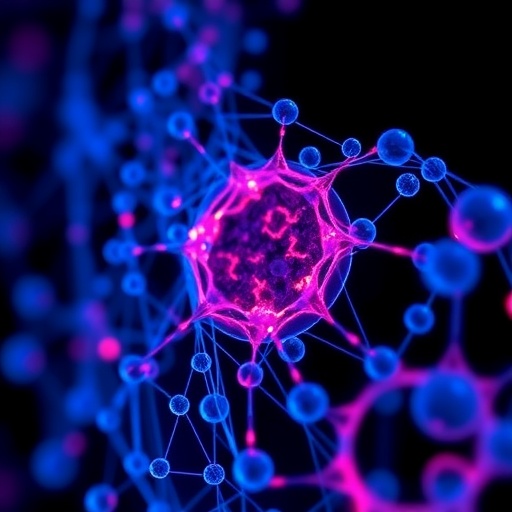Scientists at the Icahn School of Medicine at Mount Sinai have unveiled a groundbreaking AI-driven computational tool designed to revolutionize the analysis of cancer tissue. This novel tool, named MARQO, represents a significant advancement in the field of pathology, particularly in the time-consuming process of examining tumor slides. By leveraging state-of-the-art image processing technologies, MARQO is poised to change the paradigm of cancer diagnostics, allowing pathologists to better assess and interpret cancer tissue samples.
The announcement of MARQO, which stands for Multi-Analytical Robust Quantitative Observation, emerges from research recently published in the esteemed journal Nature Biomedical Engineering. The study outlines MARQO’s capabilities in extracting detailed cellular and spatial information from whole-slide images of tumor tissues. This development signals a leap forward in the integration of computational power with traditional pathology, enabling more nuanced examinations of cancerous samples than ever before.
Historically, the process of analyzing stained tissue sections is labor-intensive and often limited in scope. Pathologists typically examine small areas under a microscope, making it challenging to see the broader picture of tumor composition and organization. MARQO addresses this limitation by permitting the analysis of entire slides without the need for manual segmentation into smaller patches. This innovation not only saves time but also improves the accuracy of analyses, which is critical for ensuring precise interpretations and diagnoses.
One of the remarkable features of MARQO is its adaptability to multiple staining techniques. It supports common immunohistochemistry (IHC) and immunofluorescence (IF) staining methods, which are staples in cancer research for identifying and localizing markers in tissues. The ability to unify analyses across different staining protocols enhances reproducibility, making it easier for researchers to draw comparisons across studies and improve the reliability of their findings.
In addition to speed and versatility, MARQO incorporates sophisticated algorithms that automatically detect likely positive cells within the tissue sample. By flagging these cells and recording their precise coordinates and marker intensities, MARQO creates a structured dataset that pathologists can then validate. This combination of automated processing and human expertise fosters a more efficient workflow, allowing medical professionals to focus on interpreting the data and uncovering insights rather than getting bogged down by the tedious aspects of analysis.
Dr. Sacha Gnjatic, the lead researcher and a prominent figure in immunology and immunotherapy at Mount Sinai, emphasized the importance of MARQO in filling a crucial gap in current pathology practices. He stated that the tool was specifically designed to streamline the conversion of complex whole-slide images into actionable, structured datasets swiftly and consistently. By automating the more demanding aspects of slide analysis, MARQO empowers experts to concentrate on what truly matters—their interpretative insights and the advancement of cancer research.
Despite its impressive capabilities, MARQO is still in the research phase and has not yet been validated for clinical diagnostics. However, its compatibility with widely accepted clinical staining methods suggests a promising future where MARQO could enhance routine pathology work. The research team behind MARQO has plans to continue developing the tool, aiming to improve its user interface and introduce advanced analytical capabilities that will facilitate large-scale studies involving immense volumes of digitized tissue slides.
The potential applications of MARQO extend beyond mere analysis. As a platform for biomarker discovery, it could revolutionize how researchers identify and evaluate potential targets for cancer therapies. With accurate data on cellular composition and spatial organization, oncologists and researchers would be better equipped to predict which patients are likely to benefit from specific treatments, thereby supporting the development of personalized medicine approaches.
The implications of MARQO are far-reaching, with the potential to enhance cancer diagnostics significantly. By resolving issues related to speed, accuracy, and user-friendliness in the analysis of whole-slide images, MARQO could change the standard operating procedures within pathology labs and, ultimately, the outcomes for cancer patients. The research team views this tool as a critical step toward more precise and efficient diagnostic processes in the ever-evolving landscape of cancer treatment.
As more focus is placed on technology’s role in healthcare, tools like MARQO come to the forefront, showcasing how artificial intelligence can augment human capabilities in medical settings. The careful integration of such technologies into pathology not only supports current research efforts but also lays the groundwork for future innovations in disease detection and management.
With continued development and validation, MARQO stands to become an indispensable asset in the fight against cancer, bridging the gap between traditional analytical methods and the advancing digital landscape of medicine. As it progresses toward larger studies and clinical applications, the scientific community remains optimistic about the possibilities that MARQO opens up for enhanced cancer tissue analysis.
In conclusion, the introduction of MARQO marks a pivotal moment in how pathologists can examine and interpret cancer tissues. By harnessing the power of AI, this new tool promises to deliver unprecedented speeds and accuracy in slide analysis, encouraging a new era of research that prioritizes rapid and refined insights into cancer biology. The pursuit of precision in cancer diagnostics takes a significant leap forward with innovations like MARQO, ultimately aiming to improve patient outcomes and advance treatment methodologies.
Subject of Research: Cells
Article Title: Multiparametric cellular and spatial organization in cancer tissue lesions with a streamlined pipeline
News Publication Date: 25-Aug-2025
Web References: Nature Biomedical Engineering
References: doi:10.1038/s41551-025-01475-9
Image Credits: Credit: Mount Sinai Health System
Keywords
- Imaging
- Cell pathology




